On arrival at San José airport, head for Cahuita to discover the breathtaking natural beauty of the Caribbean coast. There are several options for getting there: by road, car or bus (allow 4 or 5 hours for the journey) or by air, with a small plane landing in the port city of Limón (35 km from Cahuita). The atmosphere here is very different from that in other parts of the country, with Afro-Caribbean culture setting the pace for Cahuita's zen-like lifestyle. From the reggae music to the architecture of the streets with their colourful traditional houses, this village has a chic hippie atmosphere.
Bordered by the Pacific Ocean on one side and the Caribbean Sea on the other, the country of volcanoes and ecotourism is renowned for its natural parks and endemic fauna, but it also reveals little-known facets. On the South-Caribbean coast, rainforests, wild beaches and mountain ranges shelter secret spots that are still little visited by tourists. From the indigenous communities to the Afro-Caribbean atmosphere of certain villages, this 4-day escapade will reveal the hidden treasures of this part of Costa Rica. An unmissable stopover on a trip of at least 10 days.

Wild Caribbean beach of Manzanillo
- © Simon Dannhauer / ShutterstockDay 1: San José to Cahuita, a Caribbean atmosphere
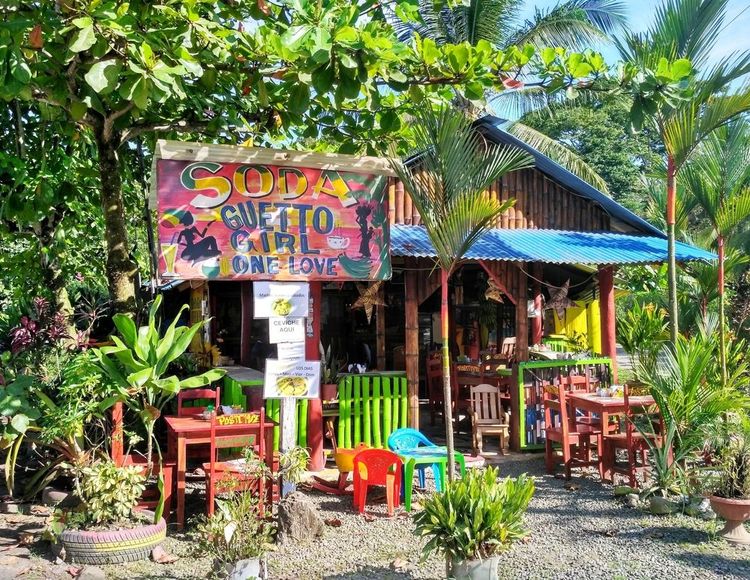
A traditional restaurant in Puerto Viejo, Costa Rica
- © phortun / ShutterstockAfternoon lazing and surfing on the southern beaches
Not far from Cahuita and close to the Panama border, Puerto Viejo is a small haven of peace where Caribbean influences are very much in evidence. Take the coastal road to the fishing village of Manzanillo and you'll find one beach after another. To explore the surrounding area, you can hire a motorbike, bicycle or horse from Puerto Viejo. The ride begins at Playa Negra, which, as its name suggests, has a striking black sand and is the perfect place to relax before heading off for a surfing session on beaches with more intense waves, such as Cocles or Salsa Brava.
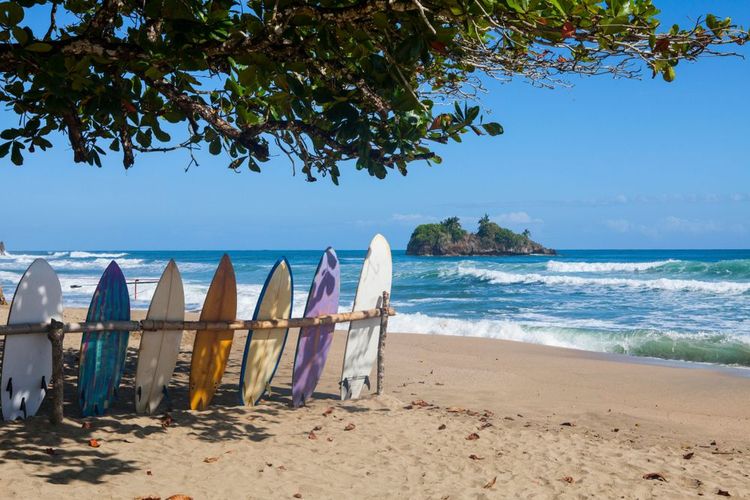
Cocles beach with its surfboards and rocky promontory
- © JurateBuiviene / ShutterstockAfter passing along Chiquita beach, a small cove of yellow sand with crystal-clear water, and Punta Uva beach, bordered by tropical rainforest, the coastal route ends at Manzanillo. This is where you'll find the Gandoca-Manzanillo natural wildlife refuge, an idyllic spot where nature is protected. Dolphins, crocodiles and mangrove oysters share the waters of the Caribbean and the mangroves, while several species of monkey and almost 300 species of bird punctuate the hikes in the heart of the tropical forest. In the evening, the village of Manzanillo is the ideal place to dine in one of the restaurants serving seafood dishes and to enjoy the Caribbean nightlife.
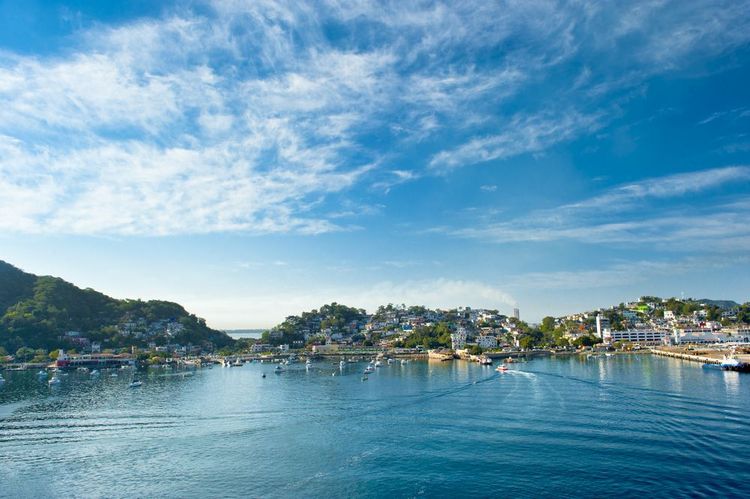
Manzanillo
- © Don Fink / ShutterstockDay 2: exploring the rainforest
The next day, it's off to Cahuita National Park for a day of wildlife watching. We set off early enough to have a chance of seeing more animals. Entrance from the village is free, but from the Vargas gate, 1 km away, it costs 10 dollars. In this park, which combines tropical forest and white sandy beaches, a path first runs along the coast and then, at the mouth of a river, leads to the edge of the jungle. On the white sandy beaches with their rounded coconut palms, snorkelling is the order of the day. The coral reefs are the best protected on this part of the Caribbean coast.
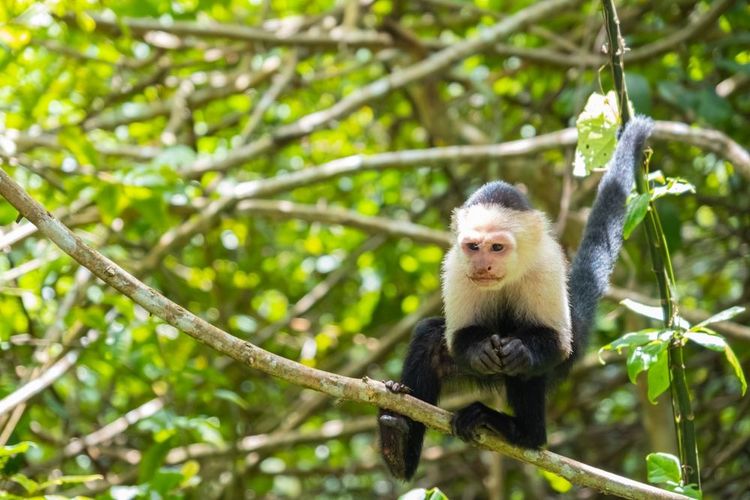
Monkey in Cahuita Park
- © Zien / ShutterstockLook up in the forest and you'll see all sorts of animals scurrying through the trees: sloths, howler monkeys, toucans, raccoons and the famous red-eyed frog, the country's emblem along with the quetzal. As for the flora, some of the trees are gigantic. There are palm trees, numerous lianas, rare species such as the jinote, which has the virtue of treating intestinal problems, and bromelia pinguin. Medicinal plants are widely used in the country, particularly by the indigenous communities.
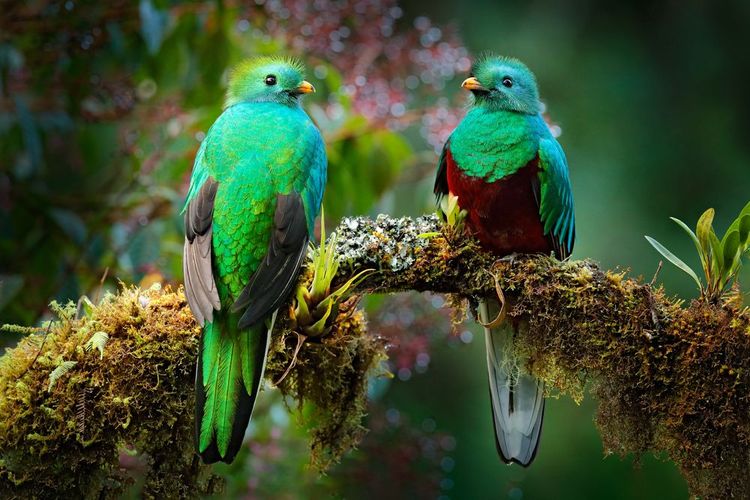
Quetzals in Costa Rican forests
- © Ondrej Prosicky / ShutterstockDay 3: Encounter with the indigenous Bribri people
After spending the night in Cahuita and immersing yourself in the Caribbean jungle, it's time to meet the local population and find out more about the country's different cultures, in particular that of the Bribris, an indigenous people who live right in the heart of the rainforest. This people of around 15,000 are scattered across several villages in the Talamanca mountain range. Their main source of income is agriculture, particularly the production of cocoa, which they also use for ceremonial rites, and women play an important role in the community.

Huts in the Bribri village in Costa Rica
- © Jenny Humphreys Barboza / ShutterstockTourists are very welcome in this community, which loves to share its traditions, crafts and gastronomy. Some Bribris take the time to learn a few words of their dialect or provide information on the types of plants to be used for their medicinal virtues. Local guides accompany tourists to the village of Bribri or Bratsi. In the latter, the experience is unforgettable: you have to cross a river in a pirogue to arrive directly at a cocoa plantation where the vegetation is luxuriant. After a meal shared with the community, head for the Bribri Lodge in Amubri, for a night in a traditional hut in the heart of nature.
Day 4: Swimming at the foot of the Bribri waterfall
The next day, after these emotionally-charged encounters and breathtaking landscapes, we felt the urge to extend our stay on the Caribbean coast. The moment was too short and we wanted to make it last longer. A stop at the Bribri waterfalls is a must, as they tumble into a pool where you can take a dip and enjoy the view once again.
Last moments on the Caribbean coast
After a leisurely lunch by the waterfalls, it's time to leave the Caribbean coast to visit the rest of Costa Rica and discover a different kind of wilderness with its parks and volcanoes. But before leaving the east coast, head for Tortuguero, a small village in the north of the Caribbean coast, which is home to a national park renowned for its wildlife, but above all its sea turtles. It's a place we recommend you visit over several days to enjoy the lush natural surroundings, discover the animals in the park and experience the warm atmosphere of the village.






